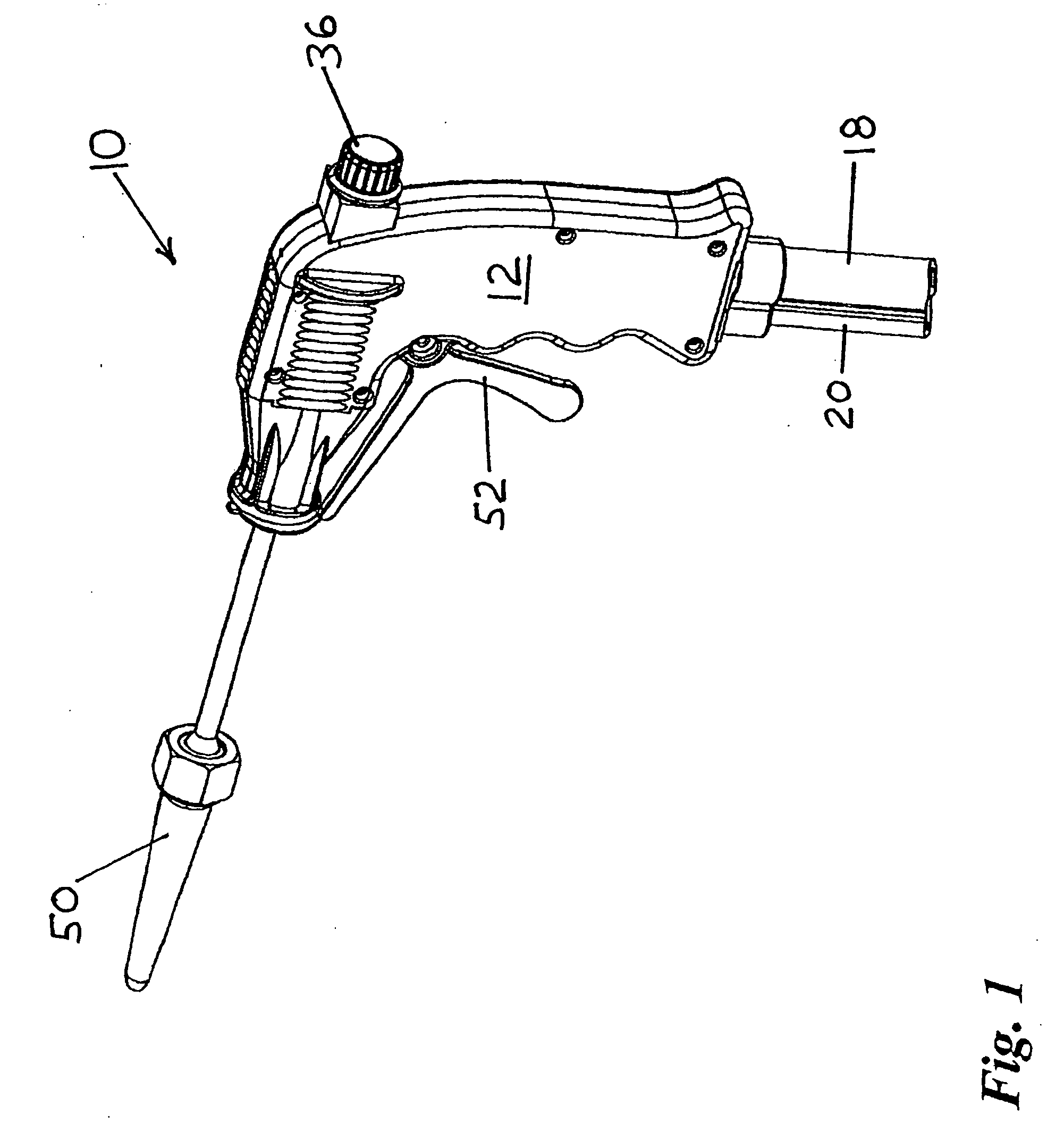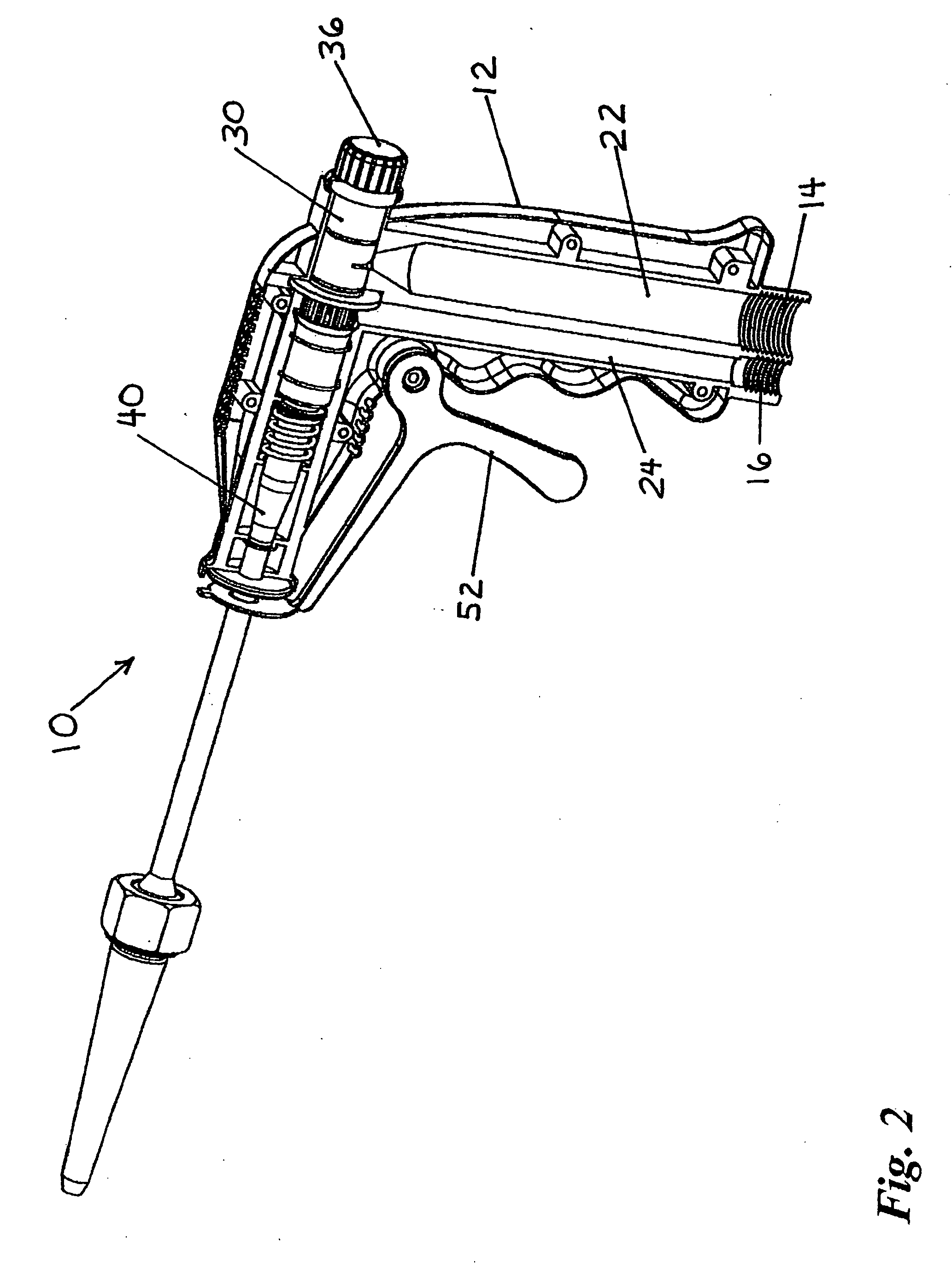Cleaning of submerged surfaces by discharge of pressurized cavitating fluids
a cavitating fluid and submerged surface technology, applied in the direction of cleaning using liquids, combustion types, vessel construction, etc., can solve the problems of serious development, no implementation in practice, and devices that require serious development and new design, so as to increase fuel consumption, increase hydrodynamic drag, and deterioration of operational specifications
- Summary
- Abstract
- Description
- Claims
- Application Information
AI Technical Summary
Benefits of technology
Problems solved by technology
Method used
Image
Examples
Embodiment Construction
[0074]FIG. 1 depicts hand-held hydrodynamic tools for use in removing debris from submerged surfaces using cavitating streams of pressurized fluid in accordance with the prior art. There is depicted a fluid discharge apparatus, generally referenced as 10, suitable for use in pressure cleaning. Fluid discharge apparatus 10 is adapted to commingle two fluids, preferably a pressurized liquid and a pressurized gas, and to discharge the commingle fluids in a high-pressure stream wherein the gas is disposed in the center of a stream of swirling liquid. As discussed more fully below, the pressurized stream is particularly useful in removing deposits from surfaces, and particularly useful in removing marine deposits from submerged surfaces.
[0075] As best depicted in FIGS. 1-7, fluid discharge apparatus 10 includes a pistol grip shaped housing 12 having a handle adapted with internally threaded ports, referenced as 14 and 16, for receiving first and second pressurized fluids via inlet hoses...
PUM
 Login to View More
Login to View More Abstract
Description
Claims
Application Information
 Login to View More
Login to View More - R&D
- Intellectual Property
- Life Sciences
- Materials
- Tech Scout
- Unparalleled Data Quality
- Higher Quality Content
- 60% Fewer Hallucinations
Browse by: Latest US Patents, China's latest patents, Technical Efficacy Thesaurus, Application Domain, Technology Topic, Popular Technical Reports.
© 2025 PatSnap. All rights reserved.Legal|Privacy policy|Modern Slavery Act Transparency Statement|Sitemap|About US| Contact US: help@patsnap.com



